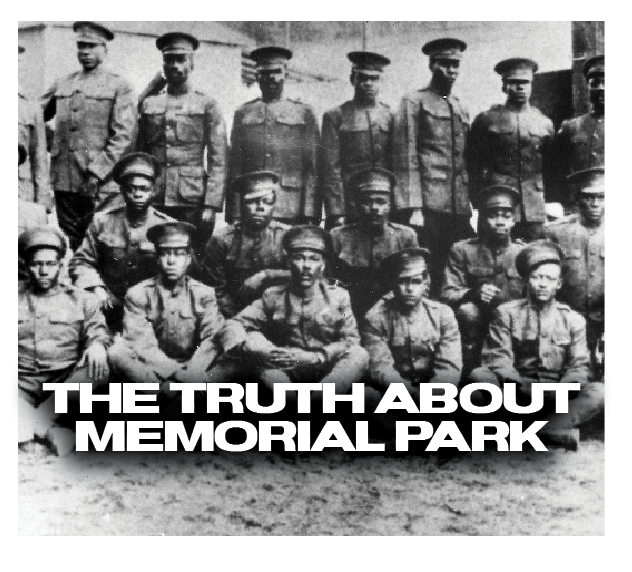By: Chelsea Davis-Bibb, Ed.D.
HOUSTON-When was the last time you visited Memorial Park in Houston? There is a lot of history that lies within Memorial Park, history that is not told as much as it should be, if it is told at all.
Memorial Park was once home to Camp Logan, 3,002 acres within a tract of 9,560 acres and was equipped to house an estimate of 40,000 troops. Camp Logan was created in response to Germany invading Belgium, which sparked Europe into war. On April 6, 1917, the United States (U.S.) entered the conflict unprepared.
According to the Heritage Society, the Selective Service Act was passed, and millions of men entered the draft, and they needed to be trained. There were 16 National Guard camps created across the U.S., and Houston was one of the cities who were granted a site. The camp was named after Mayor General John A. Logan, a veteran of the Civil War and U.S. Congressman who played a role in establishing Memorial Day as a national holiday in 1868.
On August 23, 1917, The Houston Riot occurred, which is known as the Camp Logan Mutiny, which impacted 156 soldiers, historically known as Buffalo Soldiers of the all Black 3rd Battalion, 24th infantry, according to Prairie View’s website. The 3rd Battalion, 24th Infantry was sent to Houston to guard and protect the construction of Camp Logan. It was noted that Black soldiers who were stationed in Texas were always subject to violence because Houston was a southern city that was governed under Jim Crow Laws. The soldiers were treated bad for weeks by local citizens as well as the police department. Tensions rose even higher when one of the Black soldiers was arrested and false rumors were made that he was killed while in the custody of police, which sparked a violent response.
More than a hundred of the soldiers marched down to the police station with their weapons. The city was placed under Martial law on August 24, 1917. A White mob of citizens from Houston responded to the soldiers with violence. There were 11 citizens and five police officers who were killed, thirty civilians were severely injured. Four of the mutinous soldiers were killed, with two of them being accidentally shot by their own men. Another soldier was killed by a citizen. The 24th Battalion Infantry was placed on a train the next day and sent away where they were all court martialed.
Not too long after, on December 11, 1917, thirteen Black soldiers were hung on Camp Travis in San Antonio. Sadly, the men were buried and were not identified by a name, only a number. Other soldiers were given life sentences and the following year in September 1918, six additional soldiers were also hung at Camp Travis. There was no evidence if the first soldiers participated in the riot, but six men in the second group were identified as soldiers who shot at civilians during the riot.
Many people do not know about this historic event that is known as the most tragic event that occurred in Houston. This is because people don’t talk about history like they should. It is easier to act as if nothing has happened then to acknowledge the past. Roy Douglas Malonson stated, “If you want to destroy a race, destroy its history.” Slavery and racism are a part of our past, and a part of our history. It has not defined Blacks but has molded us into the strong race we are today. It is important more now than ever that we teach our young people about our history.
There are several reasons why history is important, for one it teaches us about our culture. To know where we’re going, we must know where we come from. If we allow them to erase our history, then future generations would not know what slavery and racism is and how easily history can repeat itself. We are enslaving our future by not discussing the past.
It also allows us to understand present day events and why they happen. Knowing this will allow you to make connections and identify patterns and trends that may be oblivious to others. The past teaches us about strength and endurance and how to persevere when it seems like all odds are against you. It also teaches us to learn from past mistakes so that they won’t be repeated. History also gives us a sense of identity and great pride, and finally, history teaches us appreciation. An appreciation for the struggle of our ancestors, an appreciation for their sacrifices and lessons they bestowed upon us, and an appreciation for the weight they carried so that we could live a better life.
On this Memorial Day, we honor those who have served and have sacrificed their lives for this country. We also honor history and the past that has led us to this very moment. To everyone who have served and are currently serving our country, from the bottom of my heart, thank you for your service. The next time you visit Memorial Park, take a moment to reflect on the history that lies there deep within.










